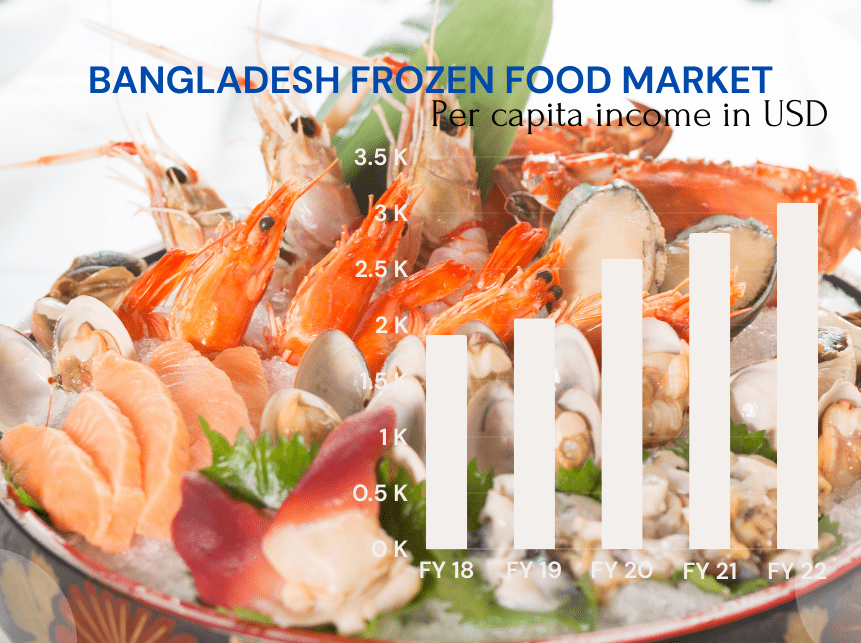Frozen food is defined as food products that are stored at low temperatures and used for a long time. The country has a large number of natural resources for making frozen foods and perishable foods, including meat, fish, fruits and vegetables. The frozen food industry has become one of the thriving industries in Bangladesh and an integral part of the country’s economy.
The frozen food market size was valued at $291.8 billion in 2019. The frozen food industry in Bangladesh is expected to exceed $ 420.48 million by 2024 and is experiencing a significant growth rate of 6.2%.
Frozen food exports are one of the major foreign exchange earning sectors in Bangladesh. According to the Export Promotion Bureau, Bangladesh earned US 638 million by exporting 55,064 tonnes of frozen food including shrimp in FY 2013-14. The value of global frozen food is around USD 15 to 16 billion; however Bangladesh’s contribution is only USD 600 Million.
Frozen food is one of the sub-sectors of agricultural in the country. Frozen food contributes around 23 per cent of total agriculture export and out of total frozen food export; shrimp alone contributes nearly 90 per cent. Shrimp is the most earning item seafood of fisheries sector that brings foreign currency by exporting to foreign country. Bangladesh earned US$147 million in 2013-14 fiscal year from exporting of vegetables to foreign destination.

Frozen food export including processed food is the leading foreign currency earning sector in the country. Processed foods there are many agro-based products adding here such as inland water fishes (Dry & freezing), Livestock & poultry processed meat (Beef, Foul and Mutton) and seasonal fruits and vegetables and by products. Now Bangladesh is the leading potato exporting country in global market, however not processing potato goods. Increasing Frozen food export needs to establish freezing & processed industries, so Foreign and Local investor can setup these industries to boost up export of Bangladesh.
So therefore, it is essential for government and non-government to support such as soft loan, training, good infrastructure, virus free fry and quality feed supply to ensure good harvesting. In addition to identify and finding the lapse and lacuna of proper shrimp and fish cultivation practice, effective strategy and awareness development among the stakeholders as well as address national and inter criticism may keep this sector stable and sustainable developed.
Best trade fair organizer Eco Expo, playing a great role for the betterment of this sector.

